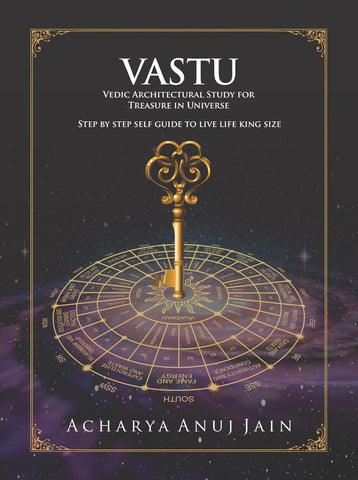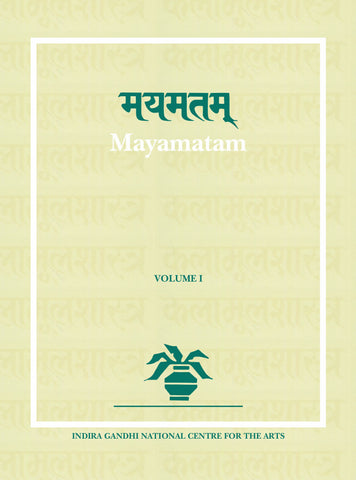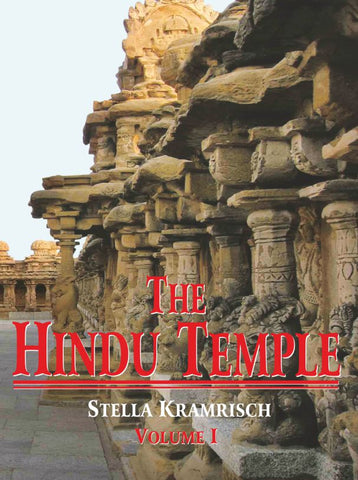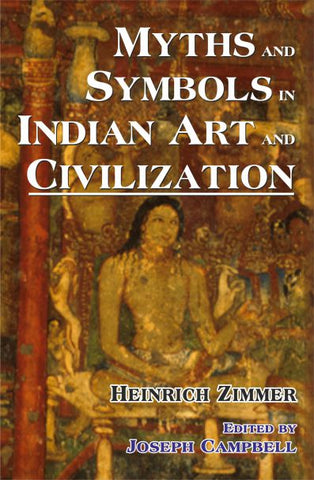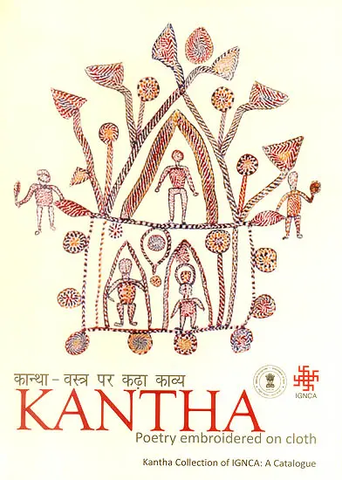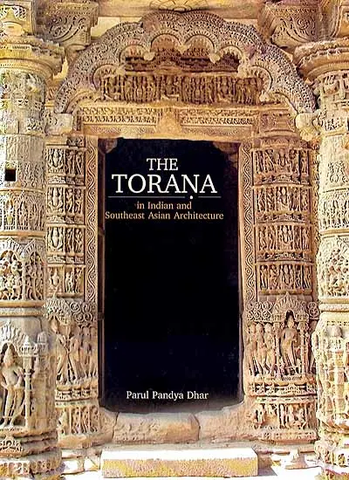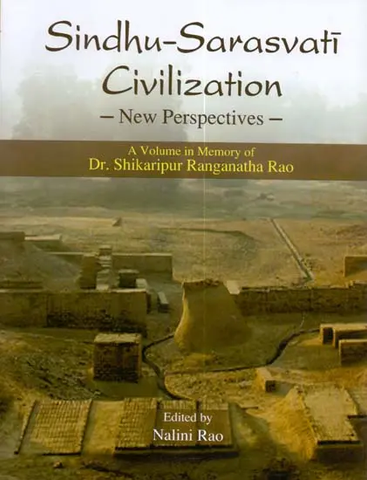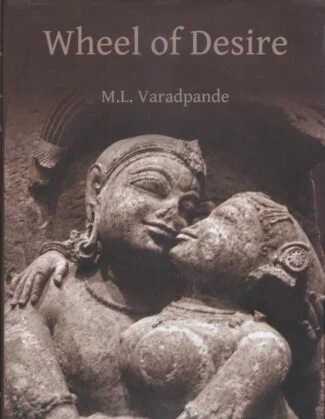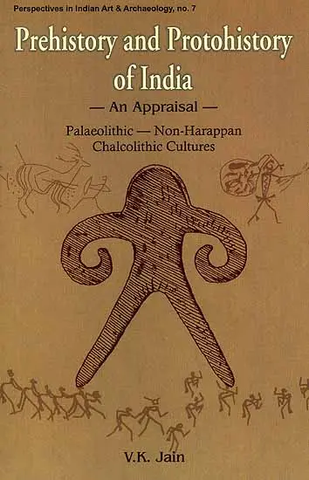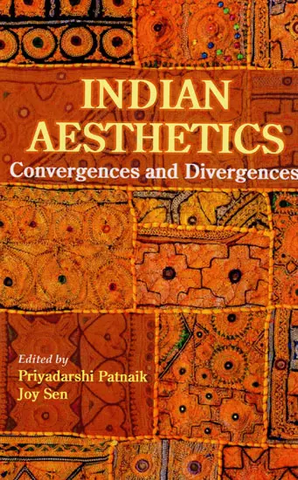Your cart is empty now.
Sri Bhojadeva was first and foremost a man of great learning, a versatile scholar, a polymath indeed, for he has been credited with works in almost every branch of knowledge. According to Ajada who wrote a commentary named Padakaprakasa on Sarasvati Kanthabharana, Bhoja wrote 84 works giving them names with his own titles and binds.
Of the various works ascribed to him, Samarangana Sutradhara is a voluminous treatise, an architectural masterpiece, dealing with technical subjects such as town planning, house architecture, temple architecture and sculptural subjects like Pratima Laksana, Iconography, Iconometry, Iconoplastic art together with Mudras, the different hand poses and the poses of the body as well as the postures of legs. It deals with the canons of painting and devotes a big chapter to the art of mechanical contrivances, the Yantras.
Samarangana Sutradhara is in eighty three chapters with chapter thirty one specializing in the mechanical contrivances and Yantras, having verses 95-100 dealing with the construction of bird shaped aerial cars and verses 101-107 dealing with the Robots meant to act as guards.
This is the first time that an English translation of this great architectural work has been attempted with various annotations and the complete original Sanskrit text. This is definitely a landmark in the field of ancient Indian architecture.
About the Author
Dr. Sudarshan Kumar Sharma is B. A. (Hons.), M. A. Ph. D he completed his graduation from D. A. V. College Jalandhar in 1955 with First class first in Sanskrit (Hons.) and post-graduation in 1958 from Deptt. Of Sanskrit, Punjab University, Jalandhar.
In 1961, he joined as regular lecturer in Sanskrit and served various colleges at Chandigarh, Bhatinda, Bhatinda, Jalandhar etc., in his long teaching carrer. Finally, he retired as Principal, Govt. College, Fazilka, Punjab. He has a number of books to his credit. Prominent among them are-
1. Tilakamanjari of Dhanapala-A Critical and Cultural Study.
2. Mrcchakatika of Sudraka - A Critical and Cultural Study.
3. Karnabharam and Madhyam-vyayoga of Bhasa (Sanskrit text with English and Hindi translation)
4. Yajnaphalam of Bhasa (Sanskrit text with English and Hindi translation). 5. Udayasundari Katha of Soddhala (Sanskrit text with English translation).
6. Mandaramanjari of Visvesvara Pandeya (Sanskrit text with English translation).
7. Brhatkatha-sloka-samgraha of Buddhasvamin (Sanskrit text with English translation).
He had been an active participator at various Oriental conferences and Seminars held in the past at various places of India. His research papers and journals have been published in almost all magazines and elicitation volumes.
Since his retirement, he has been an active writer and doing critical translations of various rare books. His forthcoming books are-Garuda Purana (Sanskrit Text with English Translation), Vayu Purana (Sanskrit Text with English Translation), Brhat-katha-manjari (Sanskrit Text with English Translation), Kalki Purana (Sanskrit Text with English Translation), Kalki Purana (Sanskrit Text with English Translation), Avantisundari-katha (Sanskrit Text with English Translation) etc.
Introduction
According to Dr. Pratipala Bhatia Munja's nephew Maharajadhiraja Kaviraja Sista Siromani Dharesvara, Sri Bhojadeva was first and foremost a man of great learning, a versatile scholar, a polymath indeed, for he has been credited with works in almost every branch of knowledge. According to Ajada who wrote a commentary named Padakaprakasa on Sarasvati Kanthabharana, Bhoja wrote 84 works giving them names with his own titles and binds. Prabhacandra Suri Prabhavaka Carita refers to Bhoja's works in several branches of learning. Of the works ascribed to him, the authorship of the following can be traced with Rajamartanda a commentary on Patanjali's Yogasutra, Sarasvati Kanthabharana (grammar) and Sarasvati Kanthabharana (Poetics), Srngara Prakasa (Poetics and Dramaturgy), Tattva Prakasa (a manual on Agamic Saivas), Brhadrajamartanda (dharmasastra grantha), Rajamrganka (medicine), and a work on Astronomy (1042 A. D.) Dr. Mahesh Singh also details the works of Bhoja as under:
I. Anthology - Subhasita Prabandha.
II. Architecture - Samarangana Sutradhara
III. Astronomy and Astrology - Aditya Pratapa Siddhanta: Rajamartanda: Rajamrganka (Karna) Vidvajnanavallabha (Prasna Vijnana)
IV. Dharmasastra, Rajadharma and Polity - Bhujabula (Nibandha) Bhupala Paddhati. Bhupala Samuccaya or Krtyasamuccaya. Canakyanitih or Dandanitih. Cauncarya; Vyavahara Samuccaya; Yuktikalpataru; Purtamartanda; Rajamartanda; Rajanitih.
V. Grammar - Sabdanusasana.
VI. Lexicography - Namamalika
VII. Medicine - Ayurveda Sarvasva; Rajamartanda or Yogasara Samgraha Rajamrgarika; Salihotra; Visranta Vidyavinoda.
VIII. Music - Sangita Prakasa.
IX. Philosophy - Rajamartanda - a commentary on Patanjali's Yoga Sutra; Rajamartanda (Vedanta); Siddhanta Samgraha; Siddhanta Sara Paddhati; Siva Tattva ratnakalika; Tattva Prakasa or (Siva tattva Prakasika)
X. Prakrta poems - Kurmastaka 2 vols.
XI. Sarasvati Kanthabharana - Srngara Prakasa
XII. Sanskrit poetry and prose - Campuramayana; Mahakalivijaya; Srngara Manjari and Vidyavinoda - only 38 composition. Though K. M. Munshi and Dr. Ganguly doubt the handiwork of Bhoja on all. A general editor he may have been.
Samarangana Sutradhara is a voluminous treatise dealing with technical subjects such as town planning, house architecture, temple architecture and sculptural subjects like Pratima Laksana, Iconography, Iconometry, Iconoplastic art together with Mudras, the different hand poses and the poses of the body as well as the postures of legs. It deals with the canons of painting and devotes a big chapter to the art of mechanical contrivances. The Yantras. The Yukti Kalpataru (also architecture, arts and crafts) Srngara manjari katha (an akhyayika in prose). The Vyavahara-manjari referred to by Vimalabodha, a commentator or Bhoja Campu, Avani Kumara Sataka (having two Prakrta poems engraved on a stone slab in Bhojasala at Dhara) each having 109 stanzas in Aryamitra! Vidvajnanavallabha Prasna Jnana (predictions on dreams), Nama Malika and Salihotra (lexicography and veterinary science). A work on music quoted by N. P. Cakravarty records two Prakrta poems engraved on a stone slab in the Bhojasala.
Samarangana Sutradhara is in eighty three chapters with chapter thirty one specializing in the mechanical contrivances and Yantras, having verses 95-100 dealing with the construction of bird shaped aerial cars and verses 101-107 dealing with the Robots meant to act as guards.
i.e. Having made a wooden large bird having body very stout and well knit, in the interior or abdomen of that one mercury, one may pour down. In its lower portion the fire place having fire filled in-
i.e. mounted over or into that the man by the breeze released owing to flapping of wings twain by the energy of its mercury, taking to marvels -flies far away into the sky. Samarangana Sutradhara, GOSE, pp. 183-184).
A wooden bird in whose hollow body is placed a copper contrivance one inch long and one quarter inch high, of slender cylindrical shape in two well joined halves allowing a hole at the centre along which air passes when the bird moves creating a pleasing sound.
Also in the hollow of the bird above, mentioned is placed a small drum like piece in halves and with an air passage as in the previous Yantra; the interior device is to be loosely hung and as the bird oscillates a highly pleasing sound is created which reduces the anger of the ladies who are cross.
Having created by a brace of well knit pieces having shape of a small drum (placed) inside, having a hole, a concavity softer one deserves to be made, in centre with a brace of ear penduncles or coils entwined as such in the mechanical contrivance already spoken of having a hollow, in a systematic manner, contrived as such. Then this bedroom accessory owing to mobility or fluctuation creates a sound that creates a thrill for a sport of love.
According to Dr. Narayana Manilal Kansara - The word "Vastu" literally means a place of residence or a house site and a house proper. Varahamihira uses "Vastu" in the strictly limited sense of a residential building. (Vastu Vidyadhyaya) (No. 53) Verse 2 and 3 refers to the "Vastu" nara as (p. 317).
Or "Vastu Purusa' referred to by L. S. Rajgopalan in the article (p. 24) entitled Construction of the Kuttambalam Temple Theatres - of Kerala from (Trichur). (Samskrta Ranga Annual Vol. VIII, Silver Jubilee Volume (1980-1987). Edited by Dr. S. S. Janaki. The Sanskrit Ranga, High Road, Mylapore, Chennai.
| CHAPTER 1 | |
| Mahasamagamana (The Insurgence of Mahasama (Prthivi) | 1 |
| CHAPTER 2 | |
| The conversation between Visvakarma and his sons (Manasa Putras) | 6 |
| CHAPTER 3 | |
| Prasna i.e. A Questionnaire | 9 |
| CHAPTER 4 | |
| The creation of the Mahat etc. (The Description of Creation) | 22 |
| CHAPTER 5 | |
| Bhuvana-kosa | 28 |
| CHAPTER 6 | |
| Sahadevadhikara (Bhavana Janma Katha) | 46 |
| CHAPTER 7 | |
| The Segregation of Varnas and Asramas (The order of Society & the stages of life) | 53 |
| CHAPTER 8 | |
| Bhumi Pariksa | 60 |
| CHAPTER 9 | |
| Hasta Laksanam | 74 |
| CHAPTER 10 | |
| The founding of a city | 82 |
| CHAPTER 11 | |
| Vastu-traya Vibhaga (The Division of Triad of Architectural Establishments) | 109 |
| CHAPTER 12 | |
| The determination of the Nadis and Siras or Siras | 115 |
| CHAPTER 13 | |
| Marma Vedha (The obstruction regarding the vulnerable points i.e. precautions against vulnerable points in Architectural structure) | 123 |
| CHAPTER 14 | |
| The decision regarding the glossary of words (in respect) of deities or gods and the variety of limbs of the House God or the gods permeating the limbs of the House God (Vastupurusa) | 128 |
| CHAPTER 15 | |
| Rajanivesah (The planning of the Kings' Abode) | 135 |
| CHAPTER 16 | |
| Vana Pravesa (The wood supply or timer requirements) | 145 |
| CHAPTER 17 | |
| The observations on the Indra's Banner (marking Indra's victory over the asuras - a symbolic illustration of victory of good over evil) | 158 |
| CHAPTER 18 | |
| The nomenclature of Nagara or Town and the like | 194 |
| CHAPTER 19 | |
| The Illustration of Catussala i.e. square round buildings or four apartmented building or four chambered houses | 206 |
| CHAPTER 20 | |
| Fruits of the designation of Samghaaaa, the three chambered and two chambered houses, the fruit of the auspicious houses, the fruit of balconies or the good effects of balconies and the names of Chattra and the likes. The fruit of the high and low landed buildings | 246 |
| CHAPTER 21 | |
| Fruits of the designation of Samghaaaa, the three chambered and two chambered houses, the fruit or the auspicious houses, the fruit of balconies or the good effects of balconies and the names of Chattra and the likes. The fruit of the high and low landed buildings. | 252 |
| CHAPTER 22 | |
| The definition of two chambered houses | 261 |
| CHAPTER 23 | |
| The Definition of single chambered houses | 270 |
| CHAPTER 24 | |
| The definition of door, pedestal, wall, measurements, the art of wood planking and defective or deficient buildings | 276 |
| CHAPTER 25 | |
| The enumeration of the number of all the houses | 283 |
| CHAPTER 26 | |
| About Income and Expenditure | 306 |
| CHAPTER 27 | |
| Sabhasaakam (Eight Assemblies) | 319 |
| CHAPTER 28 | |
| The extends of the household materials | 321 |
| CHAPTER 29 | |
| Sayanasana Laksana | 330 |
| CHAPTER 30 | |
| Rajagrha (The King's Palace) | 341 |
| CHAPTER 31 | |
| Named Yantravidhanam (Dealing with the Preparation of Mechanical Contrivances) | 363 |
| CHAPTER 32 | |
| The Elephant Stud or Equery for Tuskers | 407 |
| CHAPTER 33 | |
| The Equery of Steeds | 409 |
| CHAPTER 34 | |
| Practicable and impracticable materials | 420 |
| CHAPTER 35 | |
| The Rite named the laying of Foundation Stones | 428 |
| CHAPTER 36 | |
| The Offering of Bali to the Gods | 436 |
| CHAPTER 37 | |
| Kilaka Sutrapata (the insertion of nails and threads) | 440 |
| CHAPTER 38 | |
| Vastusamsthana matrka | 453 |
| CHAPTER 39 | |
| The defects and merits of doors or qualities and disqualification's of doors and gates | 457 |
| CHAPTER 40 | |
| The Measurement of a Pedestal or Basement | 457 |
| CHAPTER 41 | |
| Cayavidhih - The edifice laying | 469 |
| CHAPTER 42 | |
| The Ritual of Propitiatory Rites | 474 |
| CHAPTER 43 | |
| The Fruit of the damage in a door | 485 |
| CHAPTER 44 | |
| The definition of Eight Components | 497 |
| CHAPTER 45 | |
| The definition of Eight components | 497 |
| CHAPTER 46 | |
| Toranabhangadi Santikah (The pacificatory Rite on the collapse of an arched portal) | 504 |
| CHAPTER 47 | |
| The pre-requisites of a Vedi | 510 |
| CHAPTER 48 | |
| The observations on the defects of building constructions | 513 |
| CHAPTER 49 | |
| The definition of Prasadas such as Rucaka | 534 |
| CHAPTER 50 | |
| The good and bad indication of Prasadas | 565 |
| CHAPTER 51 | |
| The Foundation of shrines | 1 |
| CHAPTER 52 | |
| The specific names of the Prasadas | 5 |
| CHAPTER 53 | |
| The Inferior Gates of the Buildings | 9 |
| CHAPTER 54 | |
| The measurement of the doors of the Prasadas | 11 |
| CHAPTER 55 | |
| The Illustration of sixty four Prasadas headed by Rucaka | 28 |
| CHAPTER 56 | |
| The Illustration of sixty four Prasadas headed by Rucaka | 51 |
| CHAPTER 57 | |
| A twenty counting of Meru and others | 95 |
| CHAPTER 58 | |
| The panegyric of palaces | 123 |
| CHAPTER 59 | |
| The Definition of vimanas amounting sixty four | 126 |
| CHAPTER 60 | |
| The Definition of Thirty six Prasadas headed by Sri Kuta | 160 |
| CHAPTER 61 | |
| Pitha Pancaka Laksanam | 175 |
| CHAPTER 62 | |
| The definition of Dravida Prasadas | 185 |
| CHAPTER 63 | |
| Meru and others Vimsika nagara prasadas (the twenty town buildings of the norm of Meru) | 214 |
| CHAPTER 64 | |
| The Pre-requisites of Prasadas such as Digbhadra | 230 |
| CHAPTER 65 | |
| The Illustration of Prasadas sprung over the Earth | 247 |
| CHAPTER 66 | |
| The Definition of a Mandapa i.e. a Pavilion | 274 |
| CHAPTER 67 | |
| The definition of 27 pavilions (Mandapas) | 284 |
| CHAPTER 68 | |
| The allocation of specific parts to the land | 299 |
| CHAPTER 69 | |
| Features of 39 kinds of Jagati | 307 |
| CHAPTER 70 | |
| The illustration of images on the pedestal of a Siva phallus | 335 |
| CHAPTER 71 | |
| "Cittrodesa" The Painting Art | 355 |
| CHAPTER 72 | |
| Bhumibandha (Seasoning of the wall of painting) | 358 |
| CHAPTER 73 | |
| Lepyakarma and the like (moulding, making models) or plastering | 365 |
| CHAPTER 74 | |
| Andaka Pramana parabola and the measurement specified for the drawings for the human ace | 369 |
| CHAPTER 75 | |
| Origination of the measurement of a sketch (Manotpattih) | 372 |
| CHAPTER 76 | |
| Description of Idols | 377 |
| CHAPTER 77 | |
| The definition or signs of the provision of weapons and forms of gods and the like | 385 |
| CHAPTER 78 | |
| The signification of signs of the provision of weapons and forms of gods and the like | 385 |
| CHAPTER 79 | |
| The sings of straight and suitable spots of Installation | 399 |
| CHAPTER 80 | |
| Vaisnavadisthanalaksana (the illustration of installation of Vaisnava and the like) | 421 |
| CHAPTER 81 | |
| The Illustration of Five Robots men and women | 427 |
| CHAPTER 82 | |
| The observation on the pre-requisites of sentiments | 431 |
| CHAPTER 83 | |
| The definition of sixty four Hastas such as Pataka | 436 |
| APPENDIX | 471 |
Delivery and Shipping Policy
- INTERNATIONAL SHIPPING
- Rs.1000-1100/kg
- ESTD. Delivery Time: 2-3 weeks (depending on location)
- Bubble Wrapped with Extra Padding
- NATIONAL SHIPPING
- NCR: Rs. 30/half kg
- Standard: Rs. 80/half kg
- Express shipments also available on Request
- ESTD. Delivery Time: Ranging from 1-4 days up to 7 business days (Depending on your choice of Delivery)
- TRACKING
- All orders; national or international, will be provided with a Tracking ID to check the status of their respective orders
- Depending on the Shipping Service, Tracking ID may be used on their respective tracking portals
Frequently Asked Questions (FAQs)
Domestic Shipping: 3-4 Days (after shipping)
International Shipping: 1-2 weeks (based on your location)
You will receive an email once your order has been shipped or you can email us if you didn't receive tracking details (info@mlbd.co.in)
Every book that we sell is the latest edition except all the rare books
Yes, we do provide free shipping, only on domestic orders (within India) above Rs.1500










